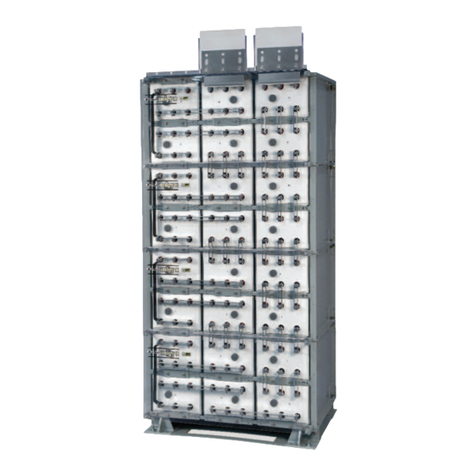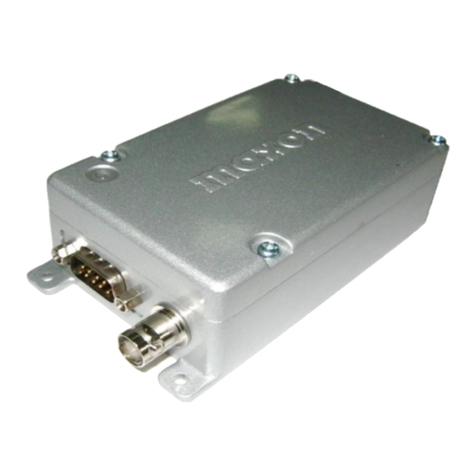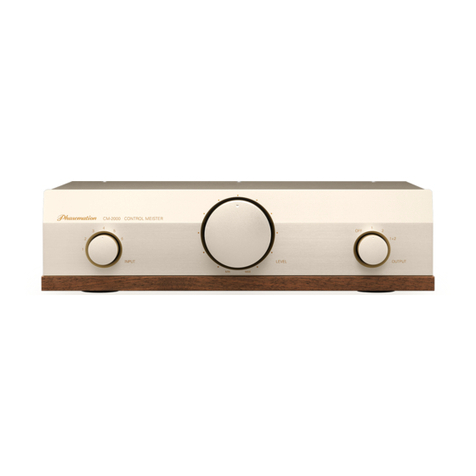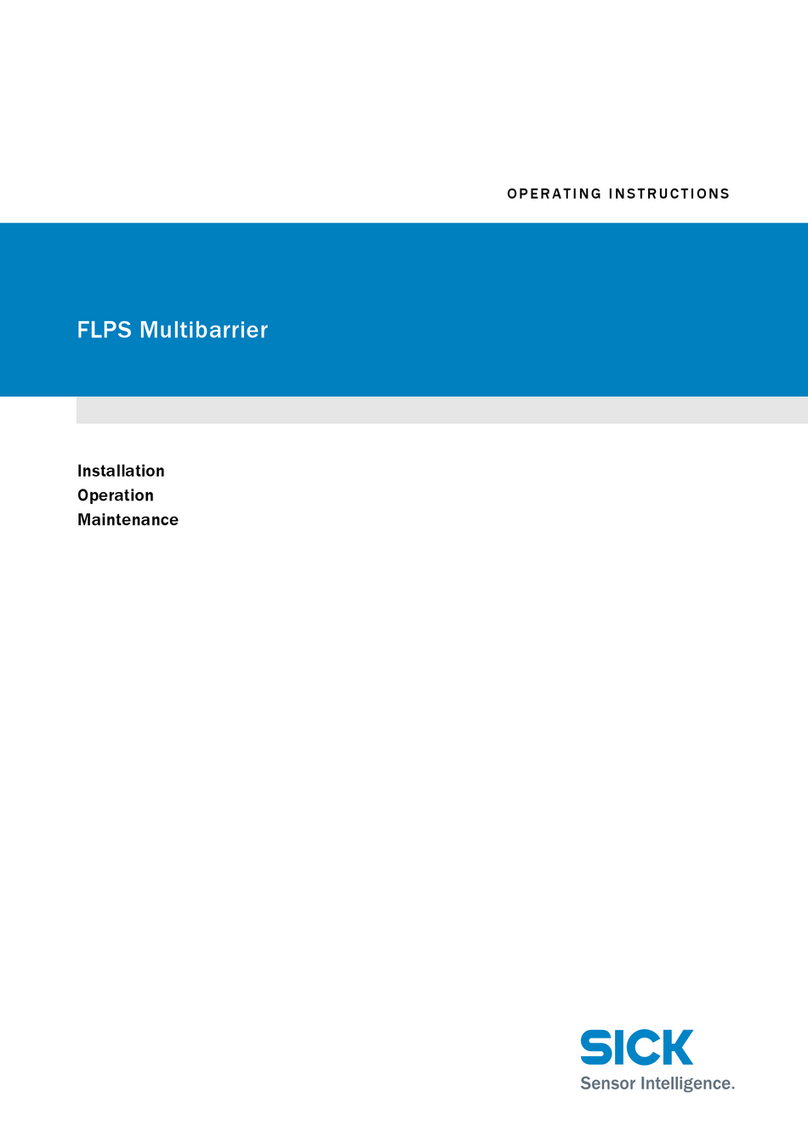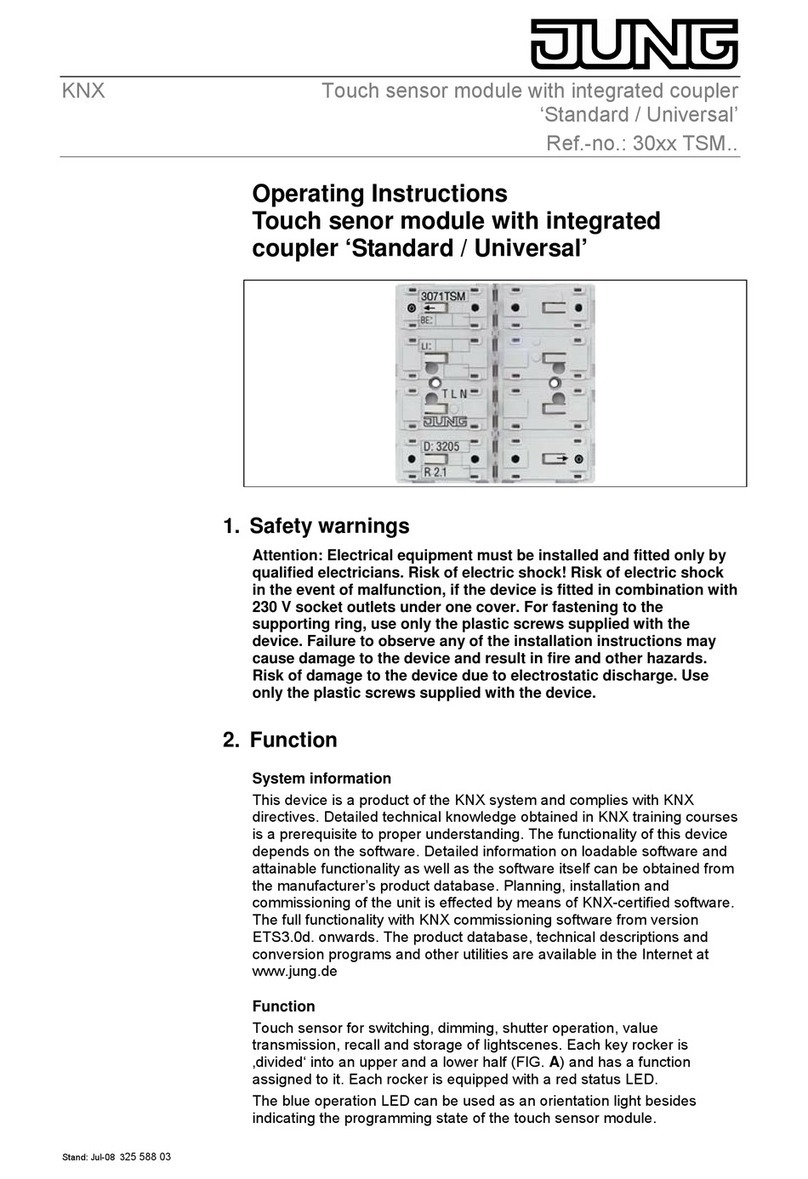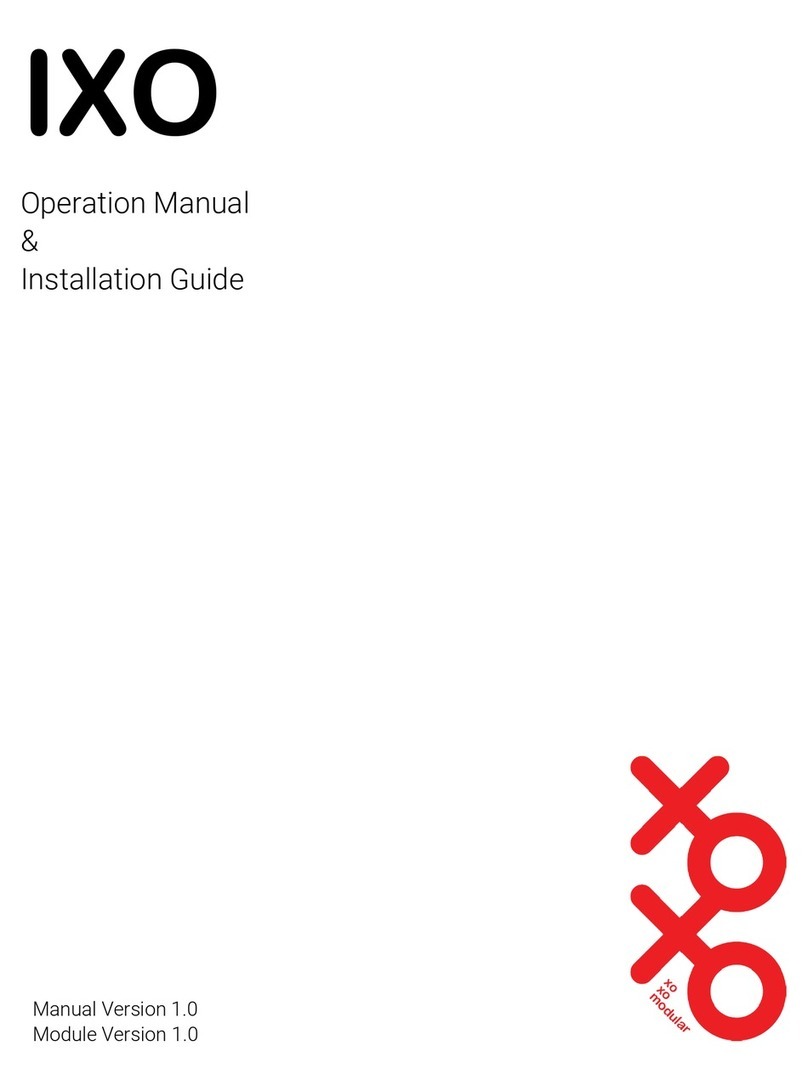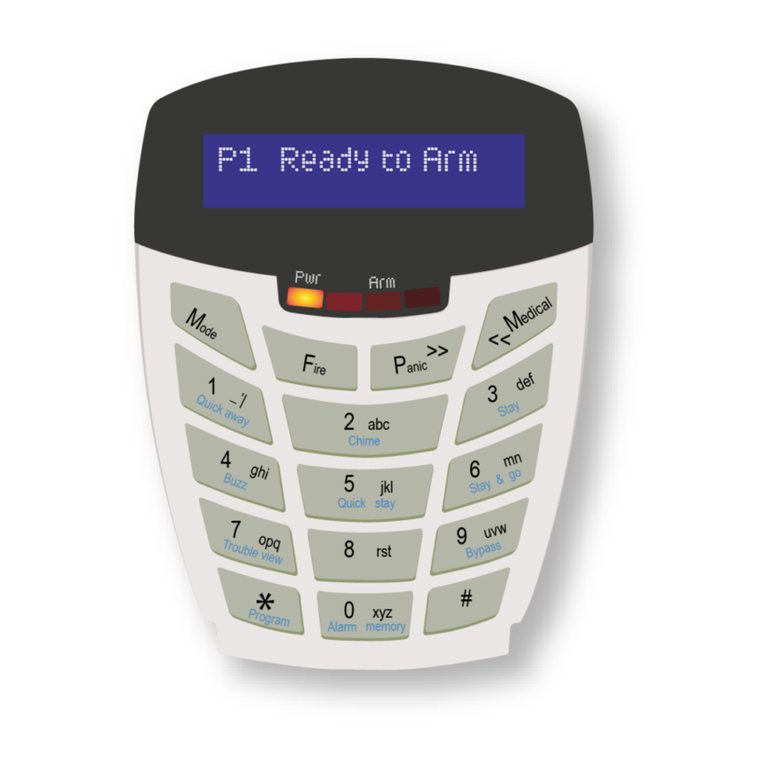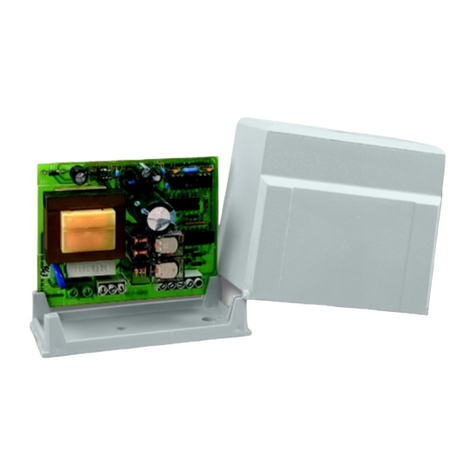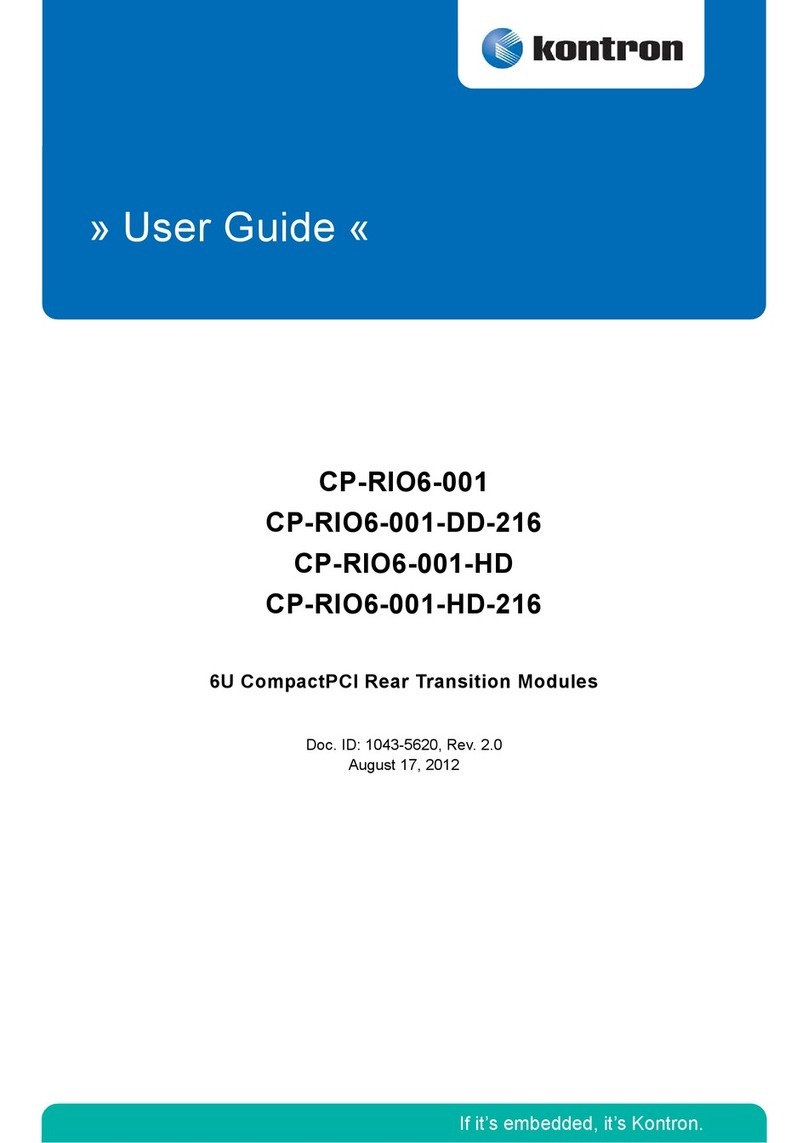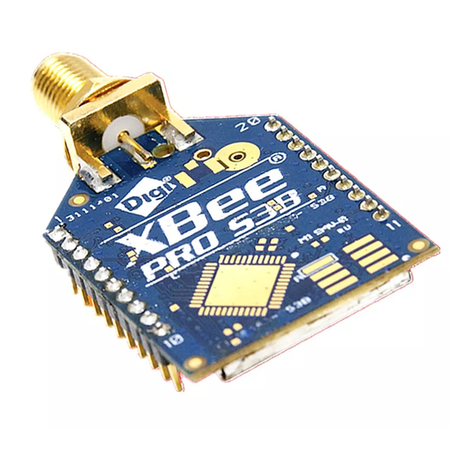Deka Fahrenheit 2V NB User manual

Fahrenheit 2V NB Module
Installation and Operation Manual
California
Proposition 65
Warning:
Batteries, battery posts, terminals and related accessories contain
lead and lead compounds, and other chemicals known to the state
of California to cause cancer and birth defects or other reproduc-
tive harm. Wash hands after handling.
2600_Fahrenheit-2V-NB-mod_I&O.indd 12600_Fahrenheit-2V-NB-mod_I&O.indd 1 2/22/22 2:44 PM2/22/22 2:44 PM

Safety Precautions
Protective Equipment.........................................3
Procedures .........................................................3
Receiving & Storage
Receiving Inspection ..........................................3
Unpacking ..........................................................3
System Shipment ...............................................3
Storage / Refresh................................................4
Installation
General ...............................................................5
Grounding...........................................................5
Electric Code for Maintenance Access..............5
Floor Anchoring & Module Arrangement ...........5
Hardware Torque Values ....................................5
System Installation
Module Installation .............................................5
Cell Installation ...................................................8
Electrical Connection
Top Termination ..................................................9
Side Termination...............................................11
Connector Assembly........................................13
Final Assembly .................................................13
Safety Shield Assembly ...................................14
System Operations
Charge Voltage.................................................15
Charge Current.................................................15
Temperature Compensation.............................15
Cell Voltage ......................................................15
Rectifier Ripple Voltage....................................15
Record Keeping................................................15
Acceptance Testing .......................................16
Maintenance
Annual Inspection.............................................16
Battery Cleaning...............................................16
Capacity Testing...............................................17
Cell Removal Procedure...................................17
Battery Maintenance Report ............................19
Appendix A
Refresh Record Form .....................................20
Appendix B
Base Anchor Hole Pattern .............................21
Appendix C
Voltage Compensation Chart .........................22
2
TABLE OF CONTENTS
2600_Fahrenheit-2V-NB-mod_I&O.indd 22600_Fahrenheit-2V-NB-mod_I&O.indd 2 2/22/22 2:44 PM2/22/22 2:44 PM

IN REFERENCE TO
THIS MANUAL:
– “Cell” is defined as an individual 2-volt unit
– “Battery string” is defined as a series connected electrical
system comprised of cells (individual 2-volt units).
SAFETY PRECAUTIONS
Although all valve-regulated cells have the electrolyte immobi-
lized within the cell, the electrical hazard associated with
batteries still exists. Work performed on these batteries
should be done with the tools and the protective equipment
listed below. Valve-regulated cell installations should be
supervised by personnel familiar with batteries and battery
safety precautions.
WARNING: Risk of fire, explosion or burns. Do not
disassemble, heat above 65°C, or incinerate.
Protective Equipment
Although VRLA cells can vent or leak small amounts of
electrolyte, electrical safety is the principle but not the only
concern for safe handling. Per IEEE 1188 recommendations, the
following minimum set of equipment for safe handling of the
cells and protection of personnel shall be available:
1. Safety glasses with side shields, or goggles, or face
shields as appropriate. (Consult application specific
requirements)
2. Electrically insulated gloves, appropriate for the installation.
3. Protective aprons and safety shoes.
4. Portable or stationary water facilities in the battery
vicinity for rinsing eyes and skin in case of contact
with acid electrolyte.
5. Class C fire extinguisher.
6. Acid neutralizing agent.
7. Adequately insulated tools.
8. Lifting devices of adequate capacity, when required.
Procedures
The following safety procedures should be followed during
installation: (Always wear safety glasses or face shield
when working on or near batteries.)
1. These cells are sealed and contain no free electrolyte. Under
normal operating conditions, they do not present any acid
danger. However, if the cell jar or cover is damaged, acid
could be present. Sulfuric acid is harmful to the skin and
eyes. Flush affected area with water immediately and
consult a physician if splashed in the eyes. Consult SDS
for additional precautions and first aid measures.
2. Prohibit smoking and open flames, and avoid arcing in
the immediate vicinity of the battery.
3. Do not wear metallic objects, such as jewelry, while working
on cells. Do not store un-insulated tools in pockets or tool
belt while working in vicinity of battery.
4. Keep the top of the battery dry and clear of tools and other
foreign objects.
5. Provide adequate ventilation (per IEEE standard 1187 and/
or local codes) and follow recommended charging voltages.
6. Extinguishing media: Class ABC extinguisher.
Note: CO2may be used but not directly on the cells due
to thermal shock and potential cracking of cases.
7. Never remove or tamper with the pressure relief valves
unless for cell replacement. Warranty void if vent valve is
removed.
8. Inspect all flooring and lifting equipment
for functional adequacy.
9. Adequately secure battery modules, racks, or cabinets to
the floor.
10. Connect support structures to ground system
in accordance with applicable codes.
11. The below IEEE Standards contain additional information.
Other standards may be relevant to your specific application.
IEEE 1187 – Recommended Practice for Installation
Design of VRLA Batteries
IEEE 1188 – Recommended Practice for Maintenance,
Testing, of VRLA Batteries
IEEE 1189 – Selection of VRLA Batteries for Stationary
Applications
RECEIVING & STORAGE
Receiving Inspection
Upon receipt, and at the time of actual unloading, each
package should be visually inspected for any possible damage
or electrolyte leakage. If either is evident, a more detailed
inspection of the entire shipment should be conducted and
noted on the bill of lading. Record receipt date, inspection date
and notify carrier of any damage.
Unpacking
1. Always wear eye protection.
2. Check all cells for visible defects such as cracked
containers, loose terminal posts, or other unrepairable
problems. Cells with these defects must be replaced.
3. Check the contents of the packages against the packaging
list. Report any missing parts or shipping damage to your
East Penn agent or East Penn Mfg. Co. immediately.
4. Never lift batteries by the terminal posts.
5. When lifting cells, the proper equipment is needed such
as a forklift or a portable crane. Always check the lifting
capacities of the equipment being used and never
lift more than one module and/or cell at a time.
System Shipment
Battery System will be received with cells and modules on
separate pallets. Amount of pallets dependent on number of cells
and module type.
3
2600_Fahrenheit-2V-NB-mod_I&O.indd 32600_Fahrenheit-2V-NB-mod_I&O.indd 3 2/22/22 2:44 PM2/22/22 2:44 PM

RECEIVING & STORAGE CONT.
Module Shipment
All battery accessories (connectors, terminal plates, hardware) will
be included with a module pallet. The pallet will be indicated with
an “Accessory” sticker. The “Accessory” module pallet will include
a base and a top plate. 3 x 2 modules will be shipped two high
with base plate and top plate on top of the module assembly.
2 x 2 modules will be shipped 3 high with base plate & top plate
on either side of the module assembly.
Cell Shipment
Each cell will be in an individual sleeve. There will be a
maximum of 6 cells per pallet.
4
3 x 2 Module Assembly
2 x 2 Module Assembly
Storage / Refresh
Cells should be installed, and float charged upon delivery. If cells
are to be stored, the below requirements shall be followed.
1. Cells shall be stored indoors in a clean, level, dry,
cool location.
2. Store, charge, and ship in horizontal position only.
3. Recommended storage temperature is 50°F (10°C) to 77°F
(25°C). Acceptable storage temperature is 0°F (-18°C) to
90°F (32°C).
4. The cells shall be given a refresh charge at regular
intervals as detailed below:
0°F(-18°C) to 77°F (25°C)
Cells shall be charged by the “battery charge date” marked
on pallet.
Successive recharges shall be performed every 6 months.
78°F (26°C) to 90°F (32°C)
Cell voltage readings shall be taken monthly. Cells must
be given a refresh charge within 3 months from date of
receipt or if any cell voltage falls below 2.12 vpc, whichever
occurs first.
Successive refresh charges shall be performed every
3 months.
5. Whenever a refresh charge is required, it’s important that all
batteries to be installed in the same series string receive a
charge at the same time to ensure continuity once placed in
their intended application.
6. Each cell shall be charged for 24 hours at a constant
voltage equal to 2.40 volts per cell. To ensure the cells are
fully charged within 24hrs, the charger used for this refresh
charge must have the capacity to provide at least the mini-
mum charge current specification and not exceed the maxi-
mum charge current for the given cell type (model), as called
out in Appendix D.
7. All requested information on “Refresh Record Form” in
Appendix A should be completed for each refresh charge.
8. Cells shall not be stored beyond 12 months. Storing beyond
12 months will affect warranty.
9. If the storage / refresh requirements cannot be met, contact
the East Penn Reserve Power Product Support Department
for alternate instructions.
2600_Fahrenheit-2V-NB-mod_I&O.indd 42600_Fahrenheit-2V-NB-mod_I&O.indd 4 2/22/22 2:44 PM2/22/22 2:44 PM

INSTALLATION
General
Caution should be taken when installing batteries to insure
no damage occurs. The battery cabinet, tray, rack, etc. shall be
inspected for sharp edges that could cause damage to the
battery casing. Batteries shall not be dropped, slid, or placed
on rough or uneven surfaces such as tray lips or grated flooring.
Mishandling of batteries could result in equipment damage or
human injury. East Penn will not be liable for damage or injury
as a result of mishandling or misuse of the product.
Grounding
When grounding the battery system, proper techniques should
be applied per electrical standards, such as NEC and/or local
codes. All module structural bolting connections are provided
with grounding washers. Two sets of 0.201 diameter x .750"
center holes are provided on the back side of the top plate to
accept a # 6 x .750 center compression grounding lug. The
holes must be tapped for a 1/4-20UNC thread and paint must
be removed for a proper grounding pad location.*
*Note: Battery system and/or individual module grounding, if
required, is the installer’s responsibility.
Hardware Torque Requirements
SYSTEM INSTALLATIONS
All parts should be verified against packaging list.
Report any missing parts.
Module Installation
Assemble system per the following details.
1. Remove floor-mounting base support from module pallet.
2. Position base(s), consult included system layout diagram
for required configuration. Bases are required to be level
prior to installing modules.
3. Multiple stack systems should have a minimum of 4.00"
between bases. The additional spacing is for proper instal-
lation of modules.
4. Anchor holes can be marked and drilled with bases in
place. All anchor holes in base (16 per base) are required
to be used to meet NEBS Zone 4 seismic requirements.
Anchors required to be installed prior to modules being
installed onto base. Reference Appendix A for base plate
anchor hole layout.
Consult local building codes for anchor bolt
requirements. Anchor bolts not included.
5
Electric Code for Maintenance Access Refer to ANSI/NFPA-70
National Electric Code for access and working space require-
ments around the battery. A minimum of 36" aisle space is
recommended in front of the battery for service and inspection.
Additional spacing may be required to meet earthquake seismic
requirements.
Module Arrangement See East Penn Mfg. Co.’s system layout
diagram. One is supplied with each shipment. If it cannot be
located, contact East Penn Mfg. Co. for a copy. Refer to your
delivery number, located on the packing slip. This will aid in
obtaining the proper diagram.
Bolt Size Torque/Retorque
1/2-13 100ft-lb 135.5 Nm
3/8-16 45ft-lb 61.0 Nm
1/4-20 125 in-lb 14.1 Nm
2600_Fahrenheit-2V-NB-mod_I&O.indd 52600_Fahrenheit-2V-NB-mod_I&O.indd 5 2/22/22 2:45 PM2/22/22 2:45 PM

7. Base and module layout should be compared to system
layout diagram. All ½-13 x 1.75" hardware (2 per corner)
are to be installed on the inside of the module for module to
base connection. All hardware should be checked for proper
torque before proceeding. Star washers are to be installed
with teeth towards module to ensure proper grounding.
Consult “Hardware Torque Requirements”
(pg 5) for proper torque values.
SYSTEM INSTALLATIONS CONT.
5. Remove hardware holding modules together (4 bolt assem-
blies) and holding modules to pallet (4 bolt assemblies).
Hardware removed from module to module will be reused
to attach modules to modules. Hardware holding modules to
pallet can be discarded.
6
Module to Pallet Disassemble
6. Install modules onto bases using supplied lifting straps.
Consult below diagram for proper sling attachment and lifting.
Consult included system layout diagram for module position.
CAUTION: Never lift more than one module at a time with
the supplied lifting slings.
Module to Module Separation
2600_Fahrenheit-2V-NB-mod_I&O.indd 62600_Fahrenheit-2V-NB-mod_I&O.indd 6 2/22/22 2:45 PM2/22/22 2:45 PM

10. The system layout diagram should be consulted to
determine module configuration. System design limits
modules to be stacked no higher than 4 modules (8 cells
high). Bolt assemblies (two per corner) are required on the
outside of the module to complete the module to module
connection. All ½-13 x 1.75" hardware should be checked
for proper torque before proceeding. Star washers are to
be installed with teeth towards module to ensure proper
grounding. Consult “Hardware Torque Requirements”
(pg 2) for proper torque values.
8. Bolt assemblies (two per corner) are required on the
outside of the module to complete the base to module
connection. All ½-13 x 1.75" hardware should be checked
for proper torque before proceeding. Star washers are to
be installed with teeth towards module to ensure proper
grounding. Consult “Hardware Torque Requirements”
(pg 5) for proper torque values.
9. Multiple battery systems — all stacks should have the
same tier completed before moving to the next tier.
7
2600_Fahrenheit-2V-NB-mod_I&O.indd 72600_Fahrenheit-2V-NB-mod_I&O.indd 7 2/22/22 2:45 PM2/22/22 2:45 PM

Star washers are to be installed with teeth towards module to
ensure proper grounding.
Note: Top Plate hardware contains two different types of
star washers. Consult below hardware diagrams for proper
installation.
SYSTEM INSTALLATIONS CONT.
11. Cell / Sleeve Installation — Install cells into modules. Cells
are shipped separate from modules. Cell polarity orientation
responsibility of installer. Consult system layout diagram for
cell location and polarity.
Care should be taken when installing cells that lifting
device does not contact previously installed cells
possibly causing a short.
8
12. Top Plate Installation — The top plate is to be installed
on the top module after all cell / sleeve assemblies have
been installed. Bolt assemblies (two per corner) are required
on the outside of the module to complete the top plate
to module connection. All ½-13 x 1.75" hardware should
be checked for proper torque before proceeding. Consult
“Hardware Torque Requirements” (pg 5) for proper
torque values.
Tier to Tier Retainer Bar
Retainer Bar Installation
1. Tier to Tier Retainer Bar Installation — Retainer bars are
to be installed per the below detail. All 3/8-16 x 1.25" hard-
ware should be checked for proper torque before proceeding.
Consult “Hardware Torque Requirements” (pg 5) for
proper torque values.
Top Retainer Bar
2. Top & Bottom Retainer Bar Installation — Retainer bars
are to be installed per the below detail. Top plate is to be in-
stalled on the top module prior to installing top retainer bar.
All 3/8-16 x 1.25" hardware should be checked for proper
torque before proceeding. Consult “Hardware Torque
Requirements” (pg 5) for proper torque values.
2600_Fahrenheit-2V-NB-mod_I&O.indd 82600_Fahrenheit-2V-NB-mod_I&O.indd 8 2/22/22 2:45 PM2/22/22 2:45 PM

Safety Shield Bracket Installation
1. Safety Shield Brackets are to be installed at the outside
corners of each module (4 per module). Consult below
detail for locations. Use 3/8-16 x 1.25" hardware to install
brackets. Consult “Hardware Torque Requirements”
(pg 5) for proper torque values.
2. Module layout should be compared to system layout
diagram and all hardware should be checked for proper
torque before proceeding. Consult “Hardware Torque
Requirements” (pg 5) for proper torque values.
ELECTRICAL CONNECTION
Follow all safety requirements as detailed in “Safety
Precautions” section prior to working on any electrical
connections.
Some installations may require the terminal plates to be in
close proximity of each other. It is recommended that the
terminal plate assembly installations be completed prior to
installing the inter-cell connections. This practice will reduce
the risk of a possible electrical short from damaging the entire
battery system.
TERMINAL ASSEMBLY
Top Termination
Consult system layout diagram for termination locations.
1. Install terminal plate bracket to the top of the module.
Slide clip onto back of channel at hole locations.
Use 3/8-16 x 1.25" hardware. Install loosely for
future alignment.
Top Shield Bracket Installation
Center Shield Bracket Installation
9
Bottom Shield Bracket Installation
Bottom Retainer Bar
2600_Fahrenheit-2V-NB-mod_I&O.indd 92600_Fahrenheit-2V-NB-mod_I&O.indd 9 2/22/22 2:45 PM2/22/22 2:45 PM

5. Install terminal plate to battery posts using 1/4-20 x 1.00"
hardware.
TERMINAL ASSEMBLY CONT.
2. Remove module bolts directly behind location of
terminal plate.
10
3. Replace flat washer with cap washer. Re-install 3/8-16 x
1.25" into module with safety shield bracket (if required).
Torque hardware before proceeding. Consult “Hardware
Torque Requirements” (pg 5) for proper torque values.
4. Install rubber caps over bolts.
Terminal Plate to be installed on battery posts as shown
6. Attach terminal plate to terminal plate bracket. Note position
of terminal plate. Terminal Plate Bracket may have to be
moved in order to be flush with the terminal plate.
7. All hardware should be checked for proper torque before
proceeding. Consult “Hardware Torque Requirements”
(pg 5) for proper torque values.
2600_Fahrenheit-2V-NB-mod_I&O.indd 102600_Fahrenheit-2V-NB-mod_I&O.indd 10 2/22/22 2:45 PM2/22/22 2:45 PM

8. Lug Hole Layout — Top terminal plate designed to use
up to 0.50" dia. bolt and a maximum 1.75" centers and
1.188" min., 2 hole lug.
Side Termination
Consult system layout diagram for side termination location.
1. Remove safety shield bracket if required.
11
0.88
1.39
3.75
3.75
.56 DIA. HOLES FOR
1/2" BOLTS
9. Lug Attachment — Maximum of six cable lugs can be
installed per terminal plate. Lug Hardware not included.
10. Safety Shield Installation — Top terminal safety shield
consists of three pieces. Assemble per the below illustra-
tion. Clear plastic shields are of different lengths. Longer
shield to be installed on the front side of the terminal plate.
The shields should be even at the bottom, making the front
shield longer at the top.
Complete Assembly
2. Install plastic Side Terminal Bracket and re-install
safety shield bracket using bolts from previous step. Use
3/8-16 x 1.50" bolt for the remaining bracket assembly.
Bolts should be installed loosely for future adjustments.
3. Install side terminal connector to battery posts using
1/4-20 hardware plate to terminal plate bracket using
1/4-20 x 1.00" hardware. Bolts should be installed
loosely for future adjustments.
2600_Fahrenheit-2V-NB-mod_I&O.indd 112600_Fahrenheit-2V-NB-mod_I&O.indd 11 2/22/22 2:45 PM2/22/22 2:45 PM

12
TERMINAL ASSEMBLYCONT.
4. Connect side terminal plate to side terminal plate connectors.
Side terminal bracket and side terminal connectors may have
to be adjusted to insure plate and connectors are flush. Use
1/4-20 x 1.25" hardware.
7. Install Side Terminal Shield to Side Terminal Plate using
¼-20 screws.
Tighten but do not torque hardware.
Complete Assembly
5. Connect side terminal plate to terminal plate bracket using
1/4-20 x 1.00" hardware. Bolts should be installed loosely
for future adjustments.
6. After all parts are installed and alignment is confirmed,
torque all bolts. Consult “Hardware Torque Requirements”
(pg 5) for proper torque values.
8. Side Terminal Plate is designed to use up to 0.50" dia. bolt
and a maximum 1.75" centers and 1.188" min., 2 hole lug.
Plate is capable of handling 4 runs of cable.
Lug Positioning Options:
Maximum of four cable lugs can be installed per terminal plate.
Lug Hardware not included.
2600_Fahrenheit-2V-NB-mod_I&O.indd 122600_Fahrenheit-2V-NB-mod_I&O.indd 12 2/22/22 2:45 PM2/22/22 2:45 PM

13
CONNECTOR ASSEMBLY
1. The contact surfaces of each individual post on every cell
have been cleaned and coated with a thin film of No-Ox-ID
“A” grease at the factory. Assure the contact surfaces are
free of dust or dirt prior to assembly. A clean non-abrasive
cloth should be used to remove ny dirt. Re-apply a light coat
of No-Ox-ID “A” grease to all cleaned surfaces.
2. The battery system is supplied with a connector package
appropriate to the required load the batteries are connected
to. Review the below chart “Connector Packages” to ensure
the correct connector package has been supplied.
5. NB battery systems are supplied with multiple connectors
to be used per battery post. A 2CU connector package will
require 2 connectors per connection (1 per side), see ex-
ample below. A 4CU package will require 4 connectors per
connection (2 per side) and an 6CU package will require 6
connectors per connection (3 per side). Tighten & torque all
bolts after all connectors are installed. Consult “Hardware
Torque Requirements” (pg 5) for proper torque values.
2CU Package Detail
Tier to Tier
Cell to Cell
3. Installation and direction of the battery post hardware is
important to ensure proper electrical clearance between
battery posts of adjacent cells and within a cell. Consult
the below diagram for clarification.
4. Battery post bolt hardware to be installed as shown.
Final Assembly Check Procedure
1. For future identification of all cells, number individual cells in
electrical connection sequence, beginning with number one
(1) at the positive end of the battery. The last cell of the bat-
tery is located at the negative output terminal.
Note: Following steps are to be followed with battery
disconnected from any load or charge source.
2. Read and record the voltages of the individual cells to assure
that they are connected properly. The total battery voltage
should be approximately equal to the number of cells con-
nected in series, multiplied by the measured voltage of one
cell If the measured is less, recheck the connections for
proper polarity. Verify that all cells and battery connections
have been properly torqued.
3. Measure and record the intercell connection resistance using
a micro-ohms meter. This helps determine the adequacy of
initial connection installation and can be used as a reference
for future maintenance requirements. Refer to the recording
forms in Appendix B of this manual. Review the records of
each connection and detail resistance measurements. Clean,
remake, and remeasure any connection that has a resistance
measurement greater than 10% of the average of all the
same type connections (i.e. intercell, intermodule, etc.).
Connector Packages
Type Plates AMPS WPC
2CU 5-33 ≤1000 ≤1600
4CU 5-33 ≤2000 ≤3200
6CU 5-33 ≤3000 ≤4800
Bolt Package
2CU 1/4-20 x 1.50” JMP1407
4CU 1/4-20 x 1.75” JMP1435
6CU 1/4-20 x 2.00” JMP1409
2600_Fahrenheit-2V-NB-mod_I&O.indd 132600_Fahrenheit-2V-NB-mod_I&O.indd 13 2/22/22 2:45 PM2/22/22 2:45 PM

CONNECTOR ASSEMBLY CONT.
4. Battery performance is based on the output at the battery
terminals. Therefore, the shortest electrical connection
between the battery system and the operating equipment
results in maximum total system performance.
Select cable size based on current carrying capability and
voltage drop.
Cable size should not provide a greater voltage drop between
the battery system and operating equipment than specified.
Excessive voltage drop in cables will reduce the desired
reserve time and power from the battery system.
SAFETY SHIELD ASSEMBLY
1. All Safety Shield Brackets should already be installed
at this time. Refer to Cell Installation Section for bracket
installation.
2. Safety Shields are designed with a “keyhole” type attachment.
Top Protection Shield Installation
For side terminal assembly, attach top protective cover to
highest front shield.
14
Bottom
Overlap
Top
3. One shield will cover one module or two tiers. Starting with
the bottom module, hang the first shield on the top brackets
through the large part of the keyhole. At the same time align-
ing the cutout at the bottom of the shield with the second set
of brackets. After all shields are in place tighten, but do not
torque hardware.
2600_Fahrenheit-2V-NB-mod_I&O.indd 142600_Fahrenheit-2V-NB-mod_I&O.indd 14 2/22/22 2:45 PM2/22/22 2:45 PM

15
For top terminal assembly, align protective cover in front of top
terminal plates. Mark area of protective shield that is required to
be removed in order to fit between the terminals. Cut protective
cover along marks.
Attach to front shield and verify fit. Additional trimming may be
required to ensure proper fit.
Equalizing
Upon installation of the battery, an optional boost charge of
2.40 vpc ± 0.01 vpc for of 24 hours (not to exceed 24 hours)
can be applied. (Note: Verify that the higher battery voltage will
not adversely affect the other connected equipment.) If this is
done, be sure to reset the charging equipment to the proper
float voltage.
Cell Voltage
Although the charger must maintain the system voltage
within ± 0.5%, individual cell voltages may vary by ± 0.05
volts of the average cell float voltage.
Rectifier Ripple Voltage
FREQUENCY
Ripple that has a frequency greater than 667Hz (duration
less than 1.5ms) is acceptable, unless it is causing additional
battery heating. Ripple that has a frequency less than 667Hz
(duration greater than1.5ms), must meet the following voltage
specification to be acceptable.
VOLTAGE
Ripple voltage shall be less than 0.5% peak to peak of the
manufacturer’s recommended string voltage. Failure to comply
can void the warranty.
RECORD KEEPING
Voltages, Temperatures & Ohmic
Readings
Record keeping is an important part of stationary battery
maintenance and warranty coverage. This information will help
in establishing a life history of the battery and inform the user
if and when corrective action needs to be taken. (Refer to
Appendix A, Battery Maintenance Report)
While it is acceptable to operate at temperatures less than
77°F (25°C), it will require longer charging time to become
fully recharged. Also, the capacity will be less at operating
temperatures below 77°F (25°C).
After installation and when the batteries have been on float
charge for one week, the following data should be recorded:
1. Battery terminal voltage.
2. Charger voltage.
3. Individual cell float voltages.
4. Ambient temperatures.
5. Terminal connections should be checked to verify that
the installer did torque all connections properly, consult
“Hardware Torque Requirements” (pg 2) for proper torque
values. Micro-ohm readings should be taken across every
connection. Refer to meter manufacturer’s instructions for
proper placement of probes. If any reading differs by more
than 20% from its initial installation value, re-torque the
connection, consult “Hardware Torque Requirements”
(pg 5) for proper torque values.
If reading remains high, clean contact surfaces
according to Step 1 under Connector Assembly.
6. Individual cell Ohmic readings. For 6-post cells,
measure from center positive to center negative posts. Do
not measure diagonally from positive to negative posts.
See next page for specific location.
SYSTEM OPERATIONS
Charger Voltage
These batteries are designed for continuous float applications.
Float / Standby
2.25 vpc ± 0.01 @ 77°F (25°C)
When setting the float voltage on the charger, the system
should be set to float at the nominal cell float voltage times
the number of cells per string. The charger must be able to
maintain the system voltage within ± 0.5% of the desired
level at all times. The desired float voltage varies with
temperature according to the table in the next column.
Charge Current
Charge current should not exceed the recommended minimum
and maximum requirements as detailed below.
Cell
Type
Max. Charge
Current (A)
Min. Charge
Current (A)**
HT125-33 352 106
Temperature Compensation
Battery voltage should be adjusted for ambient temperature
variations.
2mV per °C (1.8°F) per cell
For temperatures above 77°F (25°C) subtract and for
temperatures below 77°F (25°C) add.
Consult Voltage Compensation Chart in Appendix B
for temperature compensation voltage maximum and
minimum limits.
The average battery operating temperature should not exceed
95°F (35°C) and should never exceed 105°F (40.5°C) for more
than an eight-hour period. Operating at temperatures greater
than 77°F (25°C) will reduce the operating life of the battery. If
operating temperatures are expected to be in excess of 95°F
(35°C), contact East Penn for recommendations.
Discharging at temperatures less than 77°F (25°C) will reduce
the capacity of the battery.
Battery Voltage
Although the charger must maintain the system voltage within
± 0.5%, individual cell voltages may vary by ± 0.05 volts of the
average battery float voltage.
2600_Fahrenheit-2V-NB-mod_I&O.indd 152600_Fahrenheit-2V-NB-mod_I&O.indd 15 2/22/22 2:45 PM2/22/22 2:45 PM

RECORD KEEPING CONT. Upon completion of the acceptance test, the battery system
should be placed on float charge at 2.25 volts per cell to
restore the battery to its’ rated capacity.
Batteries should not require an equalization charge once
they have passed their initial acceptance test. Consult with
East Penn Reserve Power’s Product Support group before
performing additional equalizing charges on batteries that
have successfully passed their initial acceptance test.
MAINTENANCE
Always wear eye protection when working on or near batteries.
Keep sparks and open flames away from batteries at all times.
Review Safety Precautions on pg. 1.
The following values should be recorded using the "Battery
Maintenance Report" found in the back of this manual.
Annual Inspection (1)
1. Conduct a visual inspection of each cell.
2. Record the battery string voltage.
3. Record the charger voltage.
4. Record the individual cell voltages. The accuracy of the
DMM (Digital Multimeter) must be .05% (on dc scale) or
better. The DMM must be calibrated to NIST traceable
standards. Because float readings are affected by
discharge and recharges, these readings must be taken
when batteries have been on continuous, uninterrupted
float for at least one month. Cells should be within ± 0.05
volts of the average cell float voltage.
5. Record the ambient temperatures.
6. Record individual cell Ohmic readings.
7. Record all intercell, interunit and terminal connection
resistances. Micro-ohm readings should be taken during
this inspection. If any reading differs by more than 20%
from initial readings taken, retorque the connection.
Recheck the micro-ohm reading. If the reading remains
high, clean the contact surface according to installation
portion of this manual.
(1)
Other Maintenance Inspection intervals follow
IEEE 1188
Battery Cleaning
Batteries, cabinets, racks, and modules should be cleaned with
clear water or a mixture of baking soda and water or East Penn
mfg. supplied battery cleaner (part # 00321). Use clean water
to remove baking soda residue.
Never use solvents to clean the battery.
16
ACCEPTANCE TESTING
Each cell should be at 100% State of Charge prior to performing
an acceptance test on the battery system. To ensure the cells are
fully charged the following charge schedule should be followed.
Cells should be charged at the equalization rate of 2.40 volts per
cell for 24 hours. Temperature compensated charging parame-
ters shall be applied as detailed in “Temperature Compensation”
in Appendix B of this manual.
To ensure the cells are fully charged within 24hrs; the charger
used for this charge must have the current equal to the
maximum charge current for the given cell type (model), as
called out in the below chart.
Cell
Type
Max. Charge
Current (A)
Min. Charge
Current (A)**
HT125-33 352 106
** - Using minimum charge current will extend recharge
time and increase risk of battery being undercharged.
If these requirements cannot be met, contact East Penn Reserve
Power’s Product Support group for alternate
instructions.
Upon completion, the charge voltage should be lowered to the
float voltage of 2.25 volts per cell for a minimum period of 72
hours. Reference: IEEE 1188-2005 Section 7.2 for additional
acceptance test requirements.
Upon completion of the above charge, the desired acceptance
test can be performed.
NOTE: There shall be no discharges of any duration
between the start of the equalization and the completion
of the float period. If a discharge does occur, the charging
regime detailed above shall be repeated.
2600_Fahrenheit-2V-NB-mod_I&O.indd 162600_Fahrenheit-2V-NB-mod_I&O.indd 16 2/22/22 2:45 PM2/22/22 2:45 PM

7 Thread Polypropylene rope through the battery posts as
illustrated below and knot.
Capacity Testing
Per IEEE 1188 “Capacity testing is used to trend battery aging.
The result of a capacity test is a calculation of the capacity of
the battery. The calculated capacity is also used to determine
if the battery requires replacement.”
Do not discharge the batteries beyond the specified final
voltage. When discharging at higher rates, extra connectors
may need to be added to prevent excessive voltage drop
and / or excessive temperature rise. Consult “Connector
Packages” chart (pg. 15) for current limits. When performing
capacity testing and recording data use IEEE 1188 instruc-
tions. Should it be determined that any individual battery(ies)
or cell(s) need to be replaced, contact your nearest East Penn
agent or East Penn Service Center.
CELL REMOVAL PROCEDURE
1. Before removing cell, review Safety Precautions on pg. 2
of this manual. Contact East Penn Mfg. Company, Inc. with
specific questions or concerns.
2. Remove one cell at a time.
3. Confirm the lifting device is rated to handle the weight of
one cell.
4. All tools used to remove the cell shall be insulated to
avoid metal contact with battery posts.
5. Remove bolts from the retainer bar from the cell to be
replaced.
6. Cells develop internal pressure. Relieving this pressure
from the cell will make it easier to remove the cell from
the sleeve assembly.
a. Pry off the vent shroud
b. Remove the flame arrestor
c. Loosen valve using a 17mm hex key approximately
½ turn to release the internal pressure. A cloth should
be used to cover the valve when releasing pressure to
avoid any chance of acid spray being released”
d. Immediately tighten the valve and torque to
12-14 in-lb (1.4-1.6 Nm).
17
8. Remove the two retaining bars holding in the
cell to be removed.
2600_Fahrenheit-2V-NB-mod_I&O.indd 172600_Fahrenheit-2V-NB-mod_I&O.indd 17 2/22/22 2:45 PM2/22/22 2:45 PM

9. Pull cell from module onto lifting device. Care should
be taken so lifting device does not come in contact with
cell posts.
18
10. Replacement cell may have built up pressure while on open
circuit. Refer to step 5 for relieving the internal
cell pressure.
11. After cell has been installed into sleeve refer to “Retainer
Bar Installation” section (pg 8).
SDS sheets can be obtained at
www.eastpennmanufacturing.com.
2600_Fahrenheit-2V-NB-mod_I&O.indd 182600_Fahrenheit-2V-NB-mod_I&O.indd 18 2/22/22 2:45 PM2/22/22 2:45 PM

Cell Serial Cell Volts Cell Connector Ohmic Value Cell Serial Cell Volts Cell
Connector Ohmic Value
No. Number Temp. (Float) Ohmic Value* 1 2 3 No. Number Temp. (Float) Ohmic Value* 1 2 3
1 31
2 32
3 33
4 34
5 35
6 36
7 37
8 38
9 39
10 40
11 41
12 42
13 43
14 44
15 45
16 46
17 47
18 48
19 49
20 50
21 51
22 52
23 53
24 54
25 55
26 56
27 57
28 58
29 59
30 60
*Consult Cell type/Battery Type Label – Found on Retaining Bar or Left Side of Each Module.
*CONSULT I&O MANUAL, “RECORD KEEPING”, FOR ADDITIONAL INFORMATION INCLUDING PROPER LOCATION OF PROBES FOR MULTI-TERMINAL JARS.
Remarks and Recommendations: ____________________________________________________________________________________________________________________________________________________________________________________
_______________________________________________________________________________________________________________________________________________________________________________________________________________
_______________________________________________________________________________________________________________________________________________________________________________________________________________
Readings Taken By: ________________________________________________________________________________________________________________________ Notation: This form must be completed and submitted with any product warranty claim.
(EPM Form : XXXX 08/08 Form available as an Excel Spreadsheet. Consult your EPM Representative.) Readings should be taken at Installation and at least annually thereafter.
Battery Maintenance Report
Company________________________________________________________________ Service Date ______________________________________________________
Address_________________________________________________________________ Battery Dwg # ______________________________________________________
Battery Location & I.D. Number________________________________________________ Connector Pkg ___________________________ Ambient Air Temp.__________ºF
Total No. of Cells ____________________________ Charger Output Voltage _________ Float Currnet _________ Battery I.D. # ______________________________________
Battery Type* _____________________________________ Total Battery Voltage _____________________(read at battery terminals) Installer ______________________________
Date of Mfg.* _____________________________________ Panel Meter Voltage ______________________(display voltage) Date Installed ______________________________
Site Load Current ______________________________Amps Conductance/Impendance Meter _________________________________________________________(mfg. & model)
Rectifier Mfg. & Model__________________________________________________ AC Ripple Voltage _______________________(Note if voltage is expressed in RMS, Peak. or Peak To Peak)
Environment (i.e. Hut. Central Office. etc...) ____________________________________________________________________________________________________________
(See Manual)
2600_Fahrenheit-2V-NB-mod_I&O.indd 192600_Fahrenheit-2V-NB-mod_I&O.indd 19 2/22/22 2:45 PM2/22/22 2:45 PM

APPENDIX A
REFRESH RECORD FORM
EPM Order Number* Pallet ID Number Individual Performing Test (Full Name) Date of
Refresh Refresh Duration
Model
Number
Information Prior to Refresh Information within 1 hour of
Refresh Completion
Notes & Comments
Date
Code
Cell
Serial
Number
Open Circuit Voltage
Cell
Voltage
Reading
Charging
Current
Cell
Temperature
Cell 1
Cell 2
Cell 3
Cell 4
Cell 5
Cell 6
Cell 7
Cell 8
Cell 9
Cell 10
Cell 11
Cell 12
Cell 13
Cell 14
Cell 15
Cell 16
Cell 17
Cell 18
Cell 19
Cell 20
Cell 21
Cell 22
Cell 23
Cell 24
ALL FIELDS TO THE RIGHT OF THE CELL NUMBER ABOVE MUST BE COMPLETED
EPM ORDER NUMBER WILL APPEAR ON THE SHIPPING LABEL ON THE CARTON COVERING EACH PALLET OF CELLS
TO ENSURE CONTINUATION OF WARRANTY, SUBMIT FORMS TO: East Penn Mfg. Co, Inc.,
Form available as an Excel spreadsheet. Consult your EPM or Deka Services Representative
2600_Fahrenheit-2V-NB-mod_I&O.indd 202600_Fahrenheit-2V-NB-mod_I&O.indd 20 2/22/22 2:45 PM2/22/22 2:45 PM
Table of contents
Other Deka Control Unit manuals
Popular Control Unit manuals by other brands
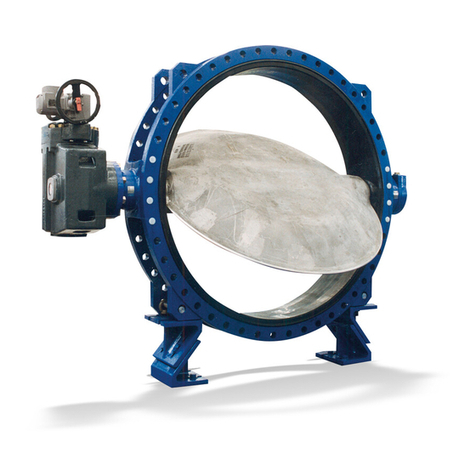
KSB
KSB ISORIA 10 operating instructions

ADTRAN
ADTRAN SFP GPON ONU quick start
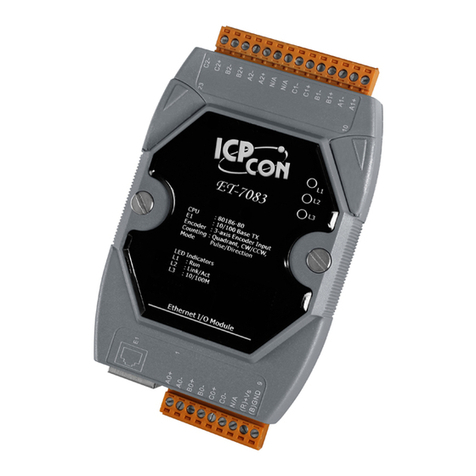
ICP DAS USA
ICP DAS USA ET-7083 quick start guide
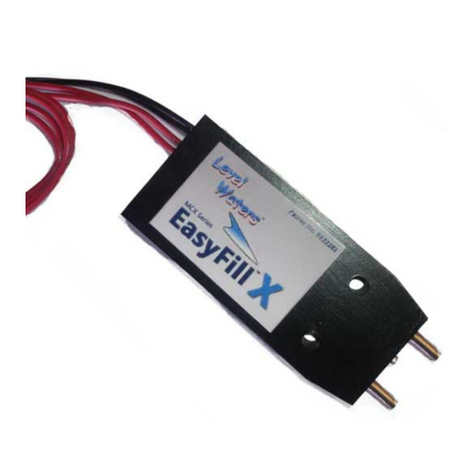
Level Waters
Level Waters EasyFill X MCX-11SW user manual
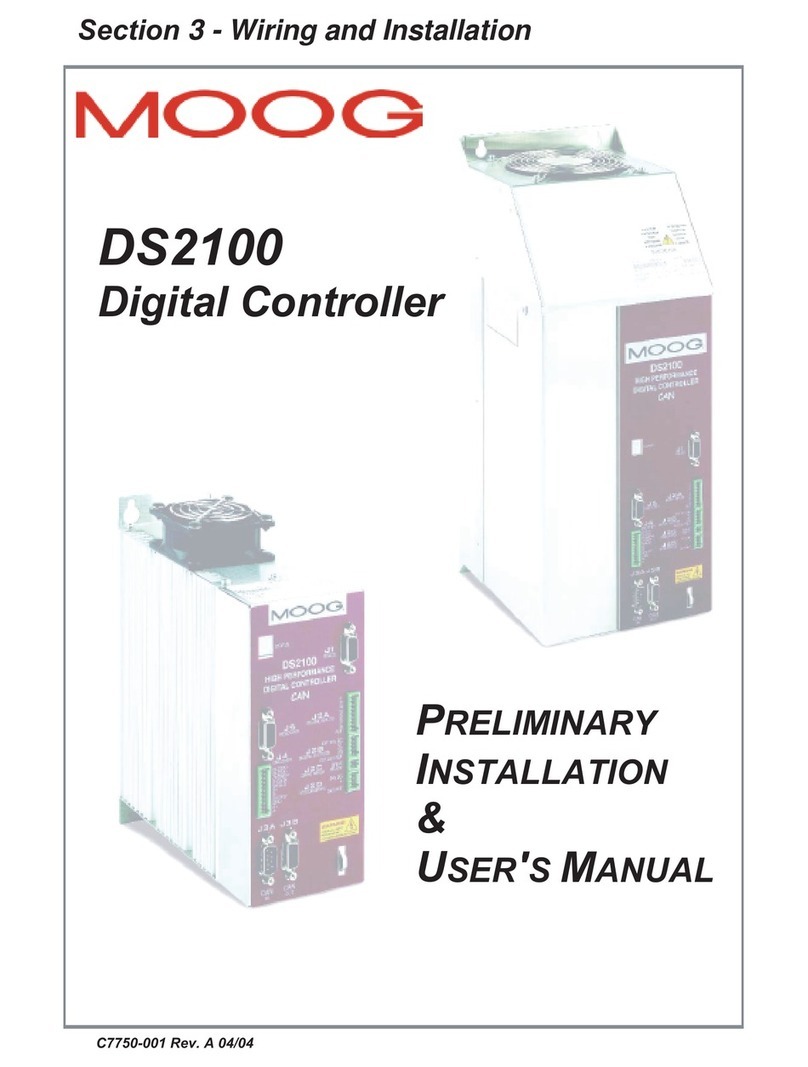
Moog
Moog DS2100 Preliminary installation & User's Manual

Sea-Bird Electronics
Sea-Bird Electronics SBE 11 plus V2 user manual
